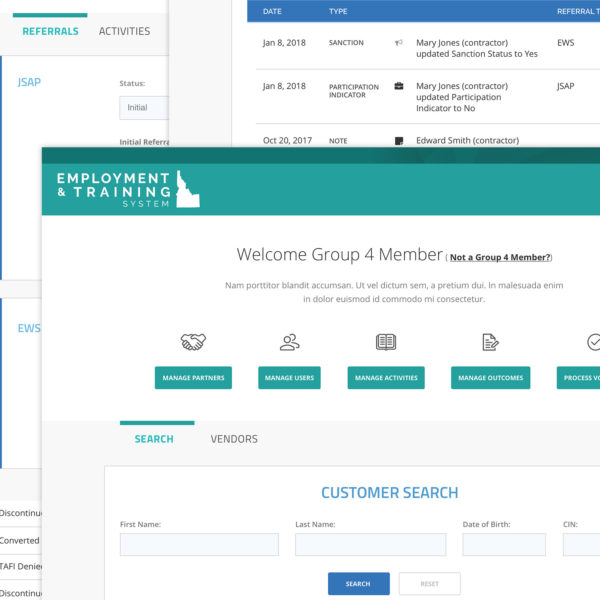The Challenge
The Employment and Training (E&T) program helps participants in the Supplemental Nutrition Assistance Program (SNAP) gain work experience, skills, and training to increase their ability to find employment and gain economic self-sufficiency.
The Idaho Department of Health and Welfare (IDHW) needed a platform that would easily connect potential E&T clients with counselors and service providers. This tool would provide the ability to track progress and outcomes through a robust set of case management tools. Goals were to keep case management data vendor-agnostic, in order to ensure continuity in the event of any changes to counseling service providers. The tool also needed to ensure accuracy and completeness of data capture, in order to receive maximum federal reimbursement.
Our Approach
GovWebworks was engaged to develop the new Employment and Training System (ETS) to record the progress of citizens registered in the various coaching programs. Employing a phased approach to development, a Minimum Viable Product was identified that would provide both counselors and IDHW stakeholders with the core tools to identify and manage potential E&T clients. These tools included the ability to sort clients by need (Tier of Service) and track the five key potential outcomes: 1) Get a job, 2) Keep a job, 3) Get a raise, 4) Get a GED, 5) Get post-secondary education.
Because Idaho also extended E&T services to Temporary Assistant for Families in Idaho (TAFI) recipients, the system needed to differentiate between TAFI and SNAP users and associate them with the correct programs — Employment Work Services for TAFI , and the Job Search Assistance Program for SNAP recipients.


The Result
The resulting program, with a Java Spring Boot backend and an Angular 5 frontend, provides a series of workflows based on the respective E&T needs. Counselors can log all significant events, including training or education referrals and work placements. The database tracks each participant through the entire referral process and keeps an audit of both systems as well as accepts manual changes. The UX has been cleanly designed with a low cognitive load for new users, which greatly improves the quality of data captured.
Phase II will integrate voucher capabilities, and allow counselors to issue reimbursement vouchers for necessary goods and products in the return-to-work process, such as books, tools, or safety equipment and apparel. This will provide IDHW workers with the ability to easily reconcile and settle voucher claims with participating vendors.
As a systems integration project that returns federal dollars into a state program, it’s also an example of cost efficiency in building a small robust piece of custom software on top of existing legacy systems.

